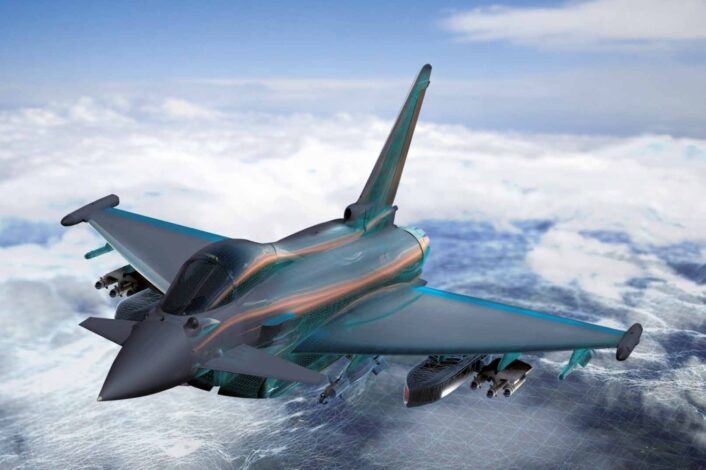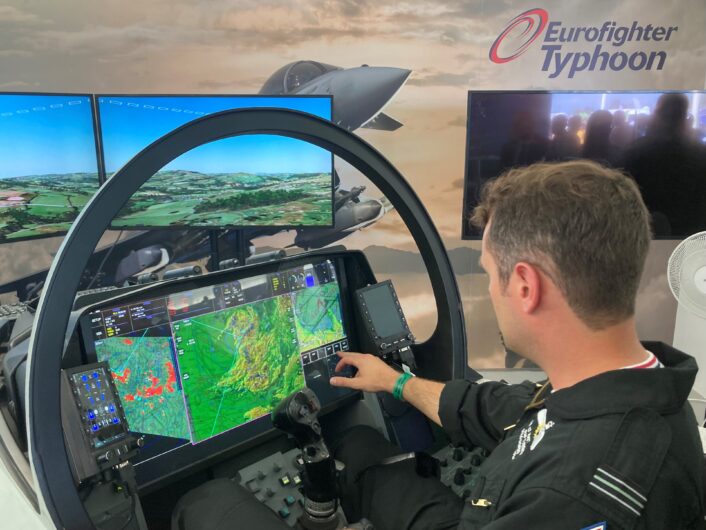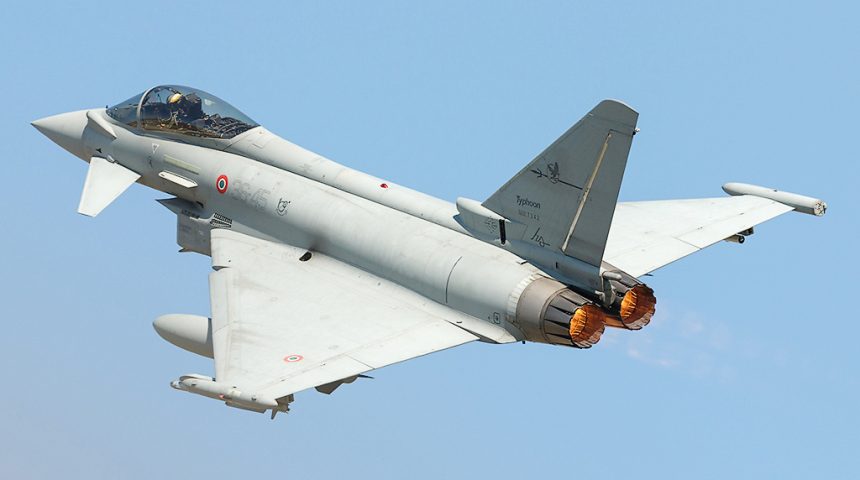The Boeing F-15EX is not the only option on the table to address Poland’s potential air superiority requirement. In fact, Eurofighter has also been in talks with Warsaw for some time, offering the Typhoon to fill in that role.
Observing the recent procurement moves made by Poland, it seems quite clear that Warsaw is engaged in a defense shopping spree, investing in new weapon systems to boost its military. Following Russia’s invasion of Ukraine, Poland has become NATO’s top spender on defense with 3.9 percent of its GDP forecasted for 2024, launching or reviving modernization programs in several fields.
The Polish Air Force has long been considering several options to fill the air superiority gap: according to the most recent figures, to meet the NATO commitments and cover its homeland security needs, the service would need to procure between 150 and 200 fighters in the next few years. For this reason, Warsaw is scouting the market for a platform that would complement F-35s and F-16s; a fighter that would need to be heavier and capable to provide more firepower than those already in service.
A possible interest in the Boeing F-15EX by the Polish Air Force has made the news during the annual MSPO International Defence Industry Exhibition in Kielce, Poland, where the U.S. aerospace company showcased its Eagle II as a potential U.S. Department of Defense Foreign Military Sales program.
However, the next generation F-15 is just one of the options. Counterbalancing the American proposal, there’s the European Eurofighter Typhoon.
Eurofighter’s bid
In brief, the Eurofighter Typhoon is considered one of the world’s most advanced air dominance/swing role aircraft. In service with several European air forces, it is almost constantly employed in NATO enhanced air policing missions along the borders of the alliance airspace. A mature, reliable, highly maneuverable aircraft with a payload that can leverage 13 hard points for carriage and include all types of weaponry, from the Meteor air-to-air missile, to the the Storm Shadow long-range stand-off missiles, to the Brimstone anti-tank missiles, the Eurofighter has evolved through the years into a true multirole asset.
That being said, one of the main arguments Eurofighter is more vocal about while supporting its bid is the one related to interoperability between the Typhoon and the F-35: whereas USAF is yet to field the EX in sufficient numbers, the paths towards joint operations between the Typhoon and the F-35 has already reached a significant degree of maturity. In this regard, the Polish Air Force could potentially capitalize on the experience of the Royal Air Force (operating both the Typhoon, and the F-35Bs), and the Italian Air Force (Typhoon and F-35A/B combo as well). And, according to some insiders, by joining the Europe’s largest single collaborative industrial program, Poland would make a step towards joining GCAP (Global Combat Air Program) in the future…

Sticking with the current needs, at he moment, the main capability gap Poland needs to face is the lack of a true air superiority platform in the inventory of the Polish Air Force. Most analysts suggest this role would need to be played by a pure air dominance/air superiority platform offering better kinematic performance than the F-35. Eurofighter firmly believes that Typhoon is the best solution in the realm of air dominance and air superiority available now, off the shelf.
The European manufacturer also claims that the Typhoon would contain no “black boxes” to Poland (i.e. a sort of limited access to the source code of some of the components or reduced sovereignty on some of the data gathered by the onboard systems) and be completely open, with a significant technology spillover for Poland that could translate into benefits for the Polish defense industry.
In times of on-going political discussions about independence and increased debate around defence responsibility in Europe, sovereignty is a key topic to consider according to Eurofighter, and the reason for highlighting this specific aspect.
Indeed, for any modern combat aircraft, mission data is crucial. It includes electromagnetic signatures, target geo-location as well as all the data that can be used to improve the situational awareness and increase survivability. A Threat Intelligence process allows the aircraft to process all the data so that the pilots can leverage accurate detail to cope with a range of threats that matter the most for their mission.
Needless to say, in such context, “data sovereignty” is particularly relevant, as it pertains to the control and use of all the above mentioned data. Every service aims at sovereign control over the mission data and, according to Eurofighter, unlike some American technologies (the F-35 most probably being among them), full sovereignty on data has been built into the Typhoon’s DNA.
Costantino Panvini Rosati, VP of Eurofighter Export at Leonardo said:
“We are strongly convinced that Eurofighter’s perspective for Poland, led by Italy and Leonardo and supported by all Eurofighter Consortium country systems can synthesize the most attractive solution for Poland on all aspects: from the operational proven readiness shown in the NATO Baltic Air Policing to the high interoperability with F-35 to the continuous evolution thanks to cutting edge technologies, leading to powerful air dominance capabilities and digital stealthiness.
Not to mention an industrial return perspective that is in no way limited to the so-called “polonization” but can provide Poland with full sovereignty of its fleet and mission data and a strategic enhancement of its technological and industrial positioning in the defence sector.”

Much uncertainty
We will see how everything plays out, and whether Poland actually decides to procure yet another platform to the mixed inventory operated by its air force. The landscape is foggy, to say the least, since at the present time lobbyists and politicians are making numerous bold statements regarding the defense procurement plans, with the election coming in mid-October. We need to wait and see which of those statements are of substance, and which are just an element of the ongoing election campaign, run by the Polish political parties.
What’s sure is that the competition is going to be stiff and everything is possible. Given the recent history of multiple defense procurements we can’t completely rule out that Poland in the end might buy more than one asset to fill the gap. We’ll see.









